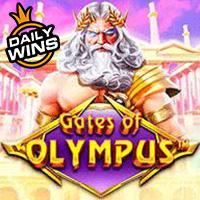




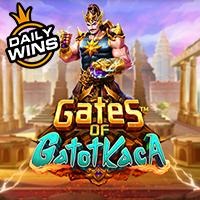
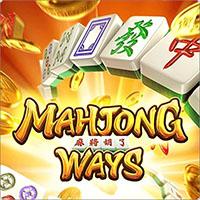
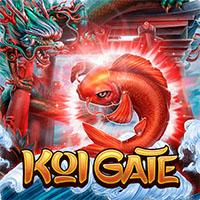
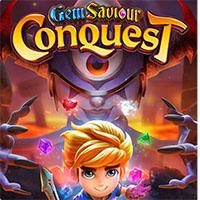

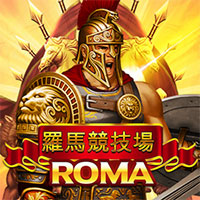
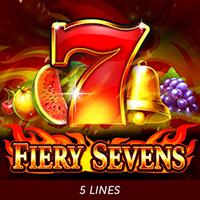






Building upon the foundational insights from How Ancient Beliefs Shape Modern Uncertainty Lessons, we delve deeper into the pivotal role that ancient rituals continue to play in shaping our present-day decision frameworks. These rituals, far from being mere traditions, have profoundly influenced the way individuals and societies interpret uncertainty, make choices, and establish societal order. Here, we explore the nuanced ways rituals serve as cognitive and social anchors that persist into modern contexts.
1. The Role of Rituals in Shaping Decision-Making Frameworks
a. How rituals encode societal values and influence individual choices
Historically, rituals have functioned as repositories of societal values, embedding cultural norms into tangible practices. For example, ancient Egyptian pharaohs performed elaborate coronation ceremonies that symbolized divine authority, reinforcing societal hierarchies. Today, similar functions are seen in national inaugurations or corporate onboarding rituals, which subtly encode leadership legitimacy and organizational values. These rituals serve as non-verbal cues, guiding individuals on acceptable behaviors and decision pathways rooted in shared cultural codes.
b. The psychological impact of ritual participation on confidence and certainty
Participation in rituals enhances psychological certainty. Neuroscientific studies reveal that engaging in familiar ritualistic behaviors activates brain regions associated with reward and security, such as the limbic system. For instance, soldiers reciting a pledge before battle report increased feelings of confidence and cohesion. Rituals reduce ambiguity, providing mental anchors that bolster decision confidence, especially in uncertain or stressful situations.
c. Case studies: Rituals as decision anchors in ancient and modern contexts
| Context | Ritual Function |
|---|---|
| Ancient Greek Oracle Consultations | Rituals of offerings and prayers as decision anchors for city-states |
| Modern Corporate Mergers | Press releases, ceremonial handshakes, and branding launches as trust signals |
2. Symbolism and Signaling in Rituals: Creating Collective Trust
a. The use of symbols to reinforce group cohesion and shared beliefs
Symbols serve as powerful visual cues that encapsulate collective identity. In ancient Rome, laurel wreaths symbolized victory and divine favor, reinforcing societal values around success. Today, national flags or corporate logos act as symbols that foster group cohesion, signaling belonging and shared purpose, which in turn influence decision-making by aligning individual actions with group expectations.
b. How symbolic rituals reduce ambiguity and foster predictability in decision-making
By adhering to recognizable symbols and rituals, societies create a predictable environment conducive to trust. For instance, swearing an oath with specific symbols or gestures reduces uncertainty about commitments. This predictability is crucial in scenarios like diplomatic negotiations or financial markets, where shared symbols and rituals underpin trust and risk assessment.
c. Modern parallels: Branding, ceremonies, and social rituals
In contemporary society, branding functions as a symbolic ritual—consumers associate logos with quality and trust. Ceremonial events, such as award shows or product launches, serve to reinforce brand identity and collective trust. These rituals create a shared emotional experience that influences consumer and stakeholder decision-making processes.
3. Ritual Timing and Decision Cycles: Aligning Actions with Cosmic or Natural Rhythms
a. The significance of timing in ritual decisions and outcomes
Timing has historically been integral to ritual efficacy. Ancient calendars, such as the Mayan Tzolk’in, dictated optimal days for planting or warfare, based on cosmic cycles. Modern decision cycles, like financial markets aligning with lunar phases or seasonal trends, reflect this enduring belief that timing influences outcomes. Recognizing these natural rhythms can improve decision accuracy and success rates.
b. Influence of celestial or natural cycles on human choices then and now
Celestial events—eclipses, solstices, planetary alignments—guided ancient decision-making, often viewed as omens. Today, data-driven approaches incorporate natural cycles; for example, agricultural planning considers lunar phases for planting. Such practices, rooted in ancient observations, continue to influence contemporary strategies, emphasizing the importance of aligning decisions with natural rhythms.
c. Contemporary practices: Calendrical decision-making and ritual timing
Modern organizations often synchronize product launches or strategic decisions with specific dates believed to enhance success, such as solstices or planetary positions. Additionally, some cultures observe auspicious dates for significant life events, reflecting a persistent reliance on ritual timing as a decision support tool.
4. Emotional and Cognitive Effects of Rituals on Risk Assessment
a. How rituals mitigate anxiety and foster a sense of control
Participating in rituals activates emotional regulation pathways, reducing anxiety. For example, soldiers performing pre-battle rituals report decreased stress levels, which enhances focus and decision clarity. Rituals create a sense of order amidst chaos, fostering a perception of control even in unpredictable situations.
b. The role of emotional arousal in shaping subsequent decisions
Emotional arousal during rituals primes individuals for specific decision outcomes. Rituals that evoke positive emotions, like hope or unity, can bias subsequent choices toward optimistic or cohesive actions. Neuroscience indicates that emotional arousal influences the valuation process, making decisions more emotionally charged and less purely rational.
c. Insights from neuroscience: Rituals as mechanisms for emotional regulation
Research in affective neuroscience shows that rituals engage brain regions such as the prefrontal cortex and amygdala, balancing emotional responses and promoting resilience. This neural engagement explains why rituals are effective in managing risk perception—by regulating emotions, they enable more calibrated decision-making under pressure.
5. Rituals as Tools for Social Reinforcement and Authority
a. The use of ritual to legitimize leadership and decision authority
Ancient rulers often employed elaborate rituals—crowning ceremonies, public sacrifices—to legitimize authority. These rituals signaled divine or cosmic endorsement, reinforcing obedience and decision-making legitimacy. Contemporary leaders use inaugural addresses or state ceremonies similarly to affirm authority within societal hierarchies.
b. Ritual participation and social conformity in ancient and modern settings
Participation in collective rituals fosters social conformity. In ancient tribes, initiation rites ensured adherence to social norms. Today, corporate rituals like team-building exercises or annual retreats serve to align individual behaviors with organizational culture, promoting conformity and cohesive decision-making.
c. The impact on individual decision autonomy versus collective consensus
While rituals reinforce collective norms, they can also influence individual autonomy. Ritual participation often involves adherence to group-defined rules, sometimes constraining personal decision-making. However, this collective reinforcement enhances social stability, which can be crucial during crises or major transitions.
6. From Ancient Rituals to Modern Decision-Heuristics: An Evolutionary Perspective
a. How ritual-based decision strategies evolved into cognitive shortcuts
Evolutionarily, rituals laid the groundwork for heuristic decision-making. By simplifying complex choices through familiar cues, humans developed mental shortcuts—superstitions, assumptions—that streamline decision processes. For example, athletes avoiding specific behaviors before competitions mirror ancient rituals designed to ensure success.
b. The influence of ritualistic thinking on heuristics like superstition and bias
Superstitions, such as lucky charms or rituals before important events, are modern manifestations of ritualistic thinking. These heuristics serve as emotional anchors, reducing anxiety and perceived uncertainty. However, they can also introduce biases, leading to irrational decisions based on false associations.
c. The persistent legacy of ritual logic in contemporary decision heuristics
Despite advancements in rational decision theories, ritual logic persists in everyday heuristics. For instance, making decisions based on ‘gut feelings’ or following habitual routines reflects deep-seated ritual influences that continue to shape our choices under uncertainty.
7. Bridging Back: How Understanding Rituals Enhances Our Comprehension of Ancient Beliefs and Modern Uncertainty
a. Integrating ritual analysis to deepen insights into ancient belief systems
By examining rituals as decision-making tools, we gain a richer understanding of ancient societies’ worldview. Recognizing their functions—whether social cohesion, authority legitimization, or risk mitigation—allows us to interpret ancient texts and practices beyond surface symbolism, revealing their practical roles in managing uncertainty.
b. Recognizing the enduring influence of ritual-based decision cues on modern behavior
Modern behaviors—such as adhering to superstitions, participating in ceremonial events, or timing decisions with natural cycles—are rooted in ancient rituals. Acknowledging this lineage helps us understand why certain decision patterns persist, especially under stress or ambiguity, and how they can be consciously managed.
c. Reflection: The continuous thread from ancient rituals to modern uncertainty management
“Rituals are the bridges between the known and the unknown, anchoring human minds in the face of uncertainty—ancient tools that still guide us today.”
Understanding the deep-rooted influence of rituals not only enriches our comprehension of ancient civilizations but also offers practical insights into managing uncertainty in contemporary life. Recognizing these patterns enables us to develop more conscious decision strategies—balancing tradition and rationality—within our complex social and personal environments.
